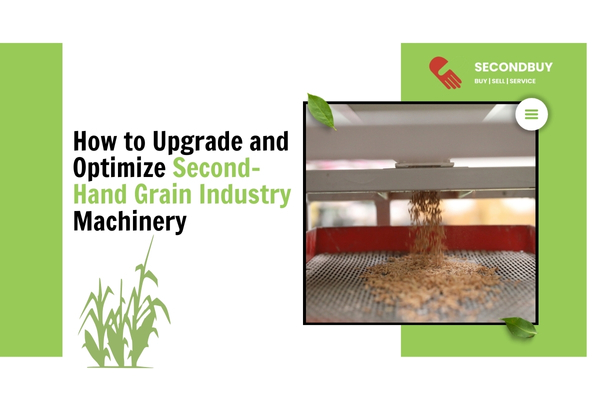How to Upgrade and Optimize Second-Hand Grain Industry Machinery
In the dynamic landscape of the grain industry, staying competitive often involves making strategic decisions about equipment. While purchasing brand-new machinery is an ideal scenario, the reality for many businesses is the consideration of second hand grain industry machinery . Explore practical tips on how to upgrade and optimize second hand grain industry machinery to ensure efficiency, reliability, and longevity in operations.
Thorough Inspection and Assessment:
Before any upgrades, conduct a comprehensive inspection of the second hand machinery. Identify any wear and tear, damaged components, or outdated technology. This initial assessment forms the foundation for planning necessary upgrades.
Upgrading Control Systems and Automation:
One of the most effective ways to enhance the performance of second hand grain industry machinery is by upgrading control systems and incorporating automation. Modern control technologies can improve precision, reduce human errors, and optimize overall operational efficiency.
Implementing Sensor Technology:
Integrate sensor technology to monitor and collect real-time data during the grain processing operation. Sensors can provide insights into machine performance, grain quality, and potential issues, allowing for proactive maintenance and informed decision-making.
Replacing Outdated Components:
Identify and replace outdated or worn-out components. This may include upgrading motors, belts, bearings, and other crucial parts that directly impact the machinery's performance. Upgrading to newer, more efficient components can extend the lifespan of the equipment.
Utilizing Energy-Efficient Solutions:
Consider incorporating energy-efficient solutions into the machinery. Upgrading to energy-efficient motors, lighting, and control systems not only reduces operational costs but also aligns with sustainable practices, making your grain processing operation more environmentally friendly.
Regular Maintenance Schedule:
Establish a proactive and regular maintenance schedule. Create a checklist for routine inspections, lubrication, and minor repairs. Regular maintenance not only prevents unexpected breakdowns but also ensures that the machinery operates at peak efficiency.
Implementing Safety Upgrades:
Prioritize safety upgrades to meet current industry standards. This may include installing safety guards, emergency stop systems, and other safety features. Ensuring a safe working environment not only protects your workforce but also minimizes the risk of machinery downtime due to accidents.
Software Updates and Integration:
Check for available software updates and ensure that the machinery is running the latest versions. Software integration can enhance communication between different components, streamline processes, and improve overall system performance.
Training and Skill Development:
Invest in training programs for your operators and maintenance staff. Ensure that they are well-versed in the upgraded machinery's functionalities and can troubleshoot common issues. Skilled personnel contribute significantly to the efficient operation and maintenance of the equipment.
Explore Modular Upgrades:
Consider modular upgrades that allow for future expansions or modifications. This flexibility ensures that your second hand grain industry machinery can adapt to changing business needs and technological advancements in the industry.
Exploring Retrofitting Opportunities:
Investigate retrofitting options for second hand grain industry machinery . Retrofitting involves updating or modifying existing equipment to meet current standards and specifications. This approach can be a cost-effective way to enhance performance without the need for a complete overhaul.
Incorporating Predictive Maintenance Techniques:
Implement predictive maintenance techniques using advanced technologies like artificial intelligence and machine learning. These techniques analyze historical data and performance patterns to predict potential issues, allowing for proactive maintenance and minimizing downtime.
Collaborating with Industry Experts:
Seek collaboration with industry experts, consultants, and technology providers. Their insights can provide valuable guidance on the latest advancements in grain processing technology and help tailor upgrades to align with specific business goals and industry trends.
Conclusion
Upgrading and optimizing second hand grain industry machinery requires a strategic and holistic approach. By conducting thorough inspections, implementing technological upgrades, and prioritizing regular maintenance, businesses can extend the life of their equipment and enhance overall operational efficiency. Embracing these practices not only maximizes the value of second hand machinery investments but also positions grain industry businesses for sustained success in an ever-evolving market.

